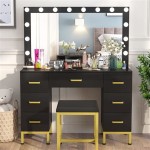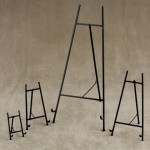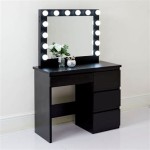Vintage Dresser Mirror Hardware: A Guide to Identification, Selection, and Restoration
Vintage dresser mirror hardware adds character and authenticity to antique and vintage furniture. Understanding the different types, materials, and styles of these hardware pieces can assist in accurate restoration, sympathetic replacement, or informed collecting. This guide explores the nuances of vintage dresser mirror hardware, covering key aspects from identification to restoration techniques.
Types of Vintage Dresser Mirror Hardware
Several types of hardware are commonly found on vintage dresser mirrors. These include:
Brackets: Brackets are essential for attaching the mirror to the dresser. They come in various shapes and sizes, including simple L-brackets, ornate decorative brackets, and adjustable swivel brackets. Identifying the bracket type is crucial for ensuring proper support and maintaining the original aesthetic.
Screws and Bolts: Securing the mirror and brackets often involves specialized screws and bolts. These can range from simple slotted screws to more decorative examples with ornate heads. The type and finish of the screws and bolts are important details to consider for a historically accurate restoration.
Finials and Decorative Elements: Many vintage dressers feature decorative elements on the mirror frame or brackets. These can include finials, rosettes, and other ornamental pieces made from materials such as wood, metal, or ceramic. These details offer valuable clues about the dresser's style and age.
Mirror Clips and Clamps: Some mirrors utilize clips or clamps to secure the mirror within the frame. These can be simple metal clips or more elaborate spring-loaded mechanisms. Understanding the function and style of these clips is important for proper mirror installation and removal.
Materials and Finishes
Vintage dresser mirror hardware is crafted from a variety of materials, each contributing to the overall aesthetic and durability of the piece. Common materials include:
Brass: A popular choice due to its durability and malleability, brass often features intricate designs and can be finished in a variety of ways, including polished, brushed, or antiqued.
Bronze: Similar to brass, bronze offers a rich, darker tone and excellent durability. It’s often used for more substantial hardware pieces and can develop a desirable patina over time.
Steel: Steel hardware is known for its strength and is frequently found in simpler, utilitarian designs. Steel can be plated with other metals like nickel or chrome for a decorative finish.
Pot Metal: A less expensive alloy, pot metal was often used for decorative elements. It’s less durable than brass or bronze and can become brittle over time.
Wood: Wood can be incorporated into various hardware elements, especially finials and decorative accents. Different wood species and finishes contribute to the overall style of the dresser.
Identifying Vintage Hardware Styles
Identifying the style of the hardware can help determine the age and origin of the dresser. Common styles include:
Victorian: Often ornate and elaborate, featuring intricate carvings, decorative motifs, and embellishments.
Art Deco: Characterized by geometric shapes, clean lines, and streamlined designs.
Mid-Century Modern: Emphasizing simple forms, functionality, and minimalist aesthetics.
Eastlake: Known for its intricate geometric patterns and incised lines.
Restoration and Replacement of Hardware
Restoring original hardware can involve cleaning, polishing, and repairing damaged parts. Several techniques can be used to clean and restore the original finish of the hardware. These include:
Gentle Cleaning with Soap and Water: This method is suitable for lightly soiled hardware. Avoid harsh chemicals or abrasive cleaners.
Specialized Metal Cleaners: Commercial metal cleaners can help remove tarnish and restore shine. Always test the cleaner on an inconspicuous area first.
Electrolysis: This method can be used to remove rust and corrosion from metal hardware. It requires specialized equipment and knowledge.
If the original hardware is beyond repair or missing, finding suitable replacements is important. Reproduction hardware is available from various sources, allowing for a close match to the original style and finish. Antique shops and salvage yards can also be valuable resources for finding original vintage hardware pieces.
Considerations for Selecting Replacement Hardware
When selecting replacement hardware, consider the following factors:
Style and Period: Choose hardware that is appropriate for the style and period of the dresser. Researching similar dressers from the same era can provide valuable guidance.
Material and Finish: Select materials and finishes that complement the dresser's overall aesthetic. Consider the existing hardware on other parts of the dresser.
Size and Proportions: Ensure the replacement hardware is the correct size and proportion for the mirror and dresser. Taking accurate measurements is essential.
Mounting Hardware: Check that the replacement hardware uses the same mounting method as the original pieces. This may require drilling new holes or adapting existing ones.
Careful consideration of these factors ensures a harmonious and authentic restoration, preserving the beauty and value of the vintage dresser and its mirror.

Heavy Duty Dresser Mirror Support Brackets Made In The Usa

Steel Mirror Swivels Paxton Hardware

How Can I Raise The Height Of Mirror On This Vintage Dresser Hometalk

Antique Solid Wood Dresser With Detachable Swivel Mirror Original Hardware

How To Repurpose An Old Swivel Mirror Confessions Of A Serial Do It Yourselfer

Voorhees Craftsman Mission Oak Furniture Antique Arts And Crafts Period Dresser With Mirror Strap Hardware

On Vintage Dresser With Mirror

Vintage Dresser With Mirror

Antique Gold Mirror Over Vintage Dresser Transitional Bedroom

Vintage 8 Drawer Dresser With Wing Mirror By Wolfcraft Www Landodreams Com








